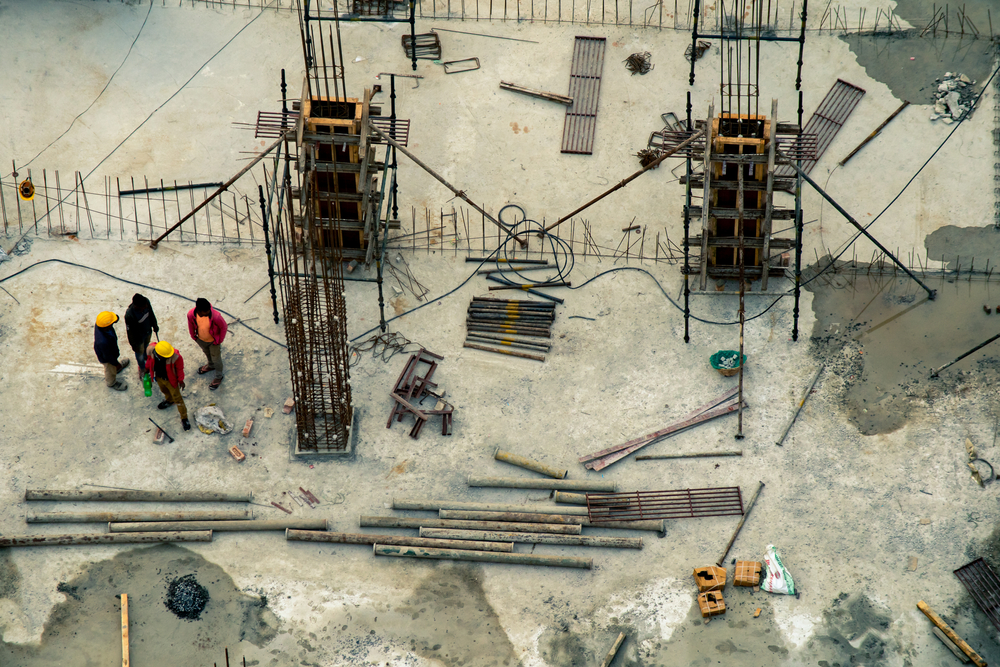India's Cement Sector enhances its sustainability status quo
While Concrete is the most used man-made material on earth, it is also a low cost, high carbon emitting material. Historically cement has been made from limestone ore and a substantial amount of carbon is released during the calcination process making it “Hard to abate” industry sector.
Globally, Cement sector accounts for close to 7% of total CO2 emission, and it needs policy intervention, financial investments and collaborative effort from all stakeholders in the value chain up to “built environment” to have a roadmap to decarbonise cement & concrete sector.
Typically, the cement manufacturing process includes mining of limestone, calcination of limestone with suitable additives/correctives for manufacturing clinker in a horizontal kiln and then grinding clinker to finer particle size to make Ordinary Portland cement (OPC) which is either bagged or sent in bulk to Ready-mix plants and other end-users for making concrete. The source of carbon in the whole process is calcination of limestone, and usage of fuel in horizontal kiln (Scope 1), use of electricity (scope 2, when sourced from state utilities) and transportation of raw materials and finished product by road (scope 3).
More than 50% of the carbon (scope 1 and scope 2) is emitted in calcination of limestone (from Calcium carbonate to calcium oxide). The best strategy for reducing this carbon is to reduce the use of clinker in cement grinding by using supplementary cementitious material (SCM) like Blast furnace slag (BFS) which is a waste coming from Steel Plants, and fly ash which is a waste coming from thermal power plants. There are standards for Slag Cement (PSC) and fly-ash cement (PPC) and composite cement (CC) in India. These are collectively called blended cement products.
[box type=”info” align=”” class=”” width=””]At JSW Cement we have a distinctive performance on the carbon intensity and is one of the lowest specific carbon emitters globally within the cement industry. As per GCCA GNR data the global average of scope 1 net CO2 emissions per tonne of cementitious product is ~ 600 kg and India average is ~ 560 kg. Compared to this for FY 20-21 our specific carbon emission is ~200 kg ; which translates into saving of 2.9 million MT of CO2 saving compared to India average and 3.2 million MT of CO2 saving compared to global average. We understand our responsibility for the nation and have taken definitive measures to lead our industry towards zero net carbon economy much before 2070 target.[/box]
Other major source of carbon is from burning fossil fuels in manufacturing clinker and drying of BFS during grinding. The best strategy for reducing this carbon emission is to use alternative fuel & raw materials (AFR) in the kiln. This requires pre-processing of alternative fuels like Municipality waste, Pharma waste, agriculture waste, plastic waste and other industrial wastes with low calorific value compared to fossil fuels. Also in the clinker plant, additional facilities and modifications are needed to feed AFR and manage chlorine and total alkali, as technically required. Remaining carbon could be reduced by installing waste heat recovery power plants which is capital intensive, but could generate 60-70% of the electricity needed in the clinker plant. For scope 3 carbon emission reduction, more and more logistics should be done by Rail (electrified) and also by Electric commercial vehicles (ECV) on Road.
So the major levers for decarbonisation are, more usage of supplementary cementitious material (SCM), alternative fuel and raw materials (AFR); waste heat recovery system (WHRS) for power generation and use of electricity from renewable energy; and transportation using Rail and ECV. There are other innovations like geopolymer concrete, carbon capture, storage and utilization, electrification of kiln, use of hydrogen instead of fossil fuels, being worked upon by academia and Industry.
While there are technical solutions to decarbonise cement sector in India, all these solutions require large capital investment. At a retail price of close to 7 rupees a kg, cement is a very low cost material. Therefore, policy intervention is needed to incentivize use of blended cement and low-carbon cement. A comprehensive sustainable procurement policy for all the infrastructure projects and public spend would catalyse acceleration of decarbonisation in cement sector.
“We are riding against the tide by creating a market for Slag cement, in a heavily PPC/OPC-dominated space. The task ahead of us has always been challenging and exciting. Our core focus is to create awareness about the advantages and unmatched quality of slag cement.
Through each of our marketing campaigns we aim to send out a message which resonates with our consumers at an emotional level and leaves them thinking about the use of green products, green cement and sustainability.” – Gurminder Singh, Head – Branding.
One of possible ways is to do carbon labelling and promote usage of low-carbon products only, that way government spend will lead the way and housing sector and other retail buyers will follow. A definitive action is the need of the hour, before it is too late as climate change will become irreversible sooner or later.
[author title=”Manoj Kumar Rustagi, Executive Vice President, JSW Cement Limited” image=”https://dev.et-insights.com/dev/wp-content/uploads/2022/01/Manoj-Kumar.jpg”]He is a senior business leader, and is leading Sustainability & Innovation, Business Strategy & Capex Projects at JSW Cement. Manoj is also a director on the board of GCCA India, in his personal capacity. [/author]



